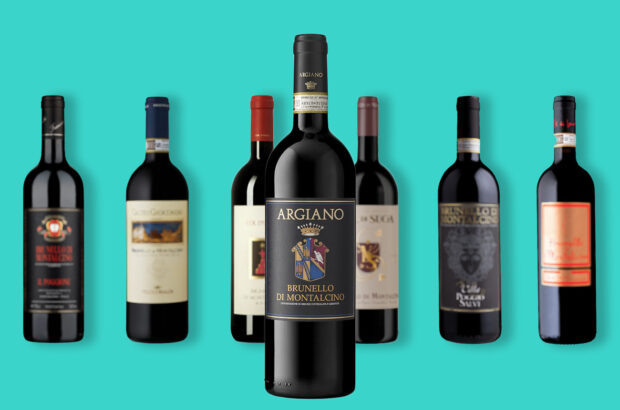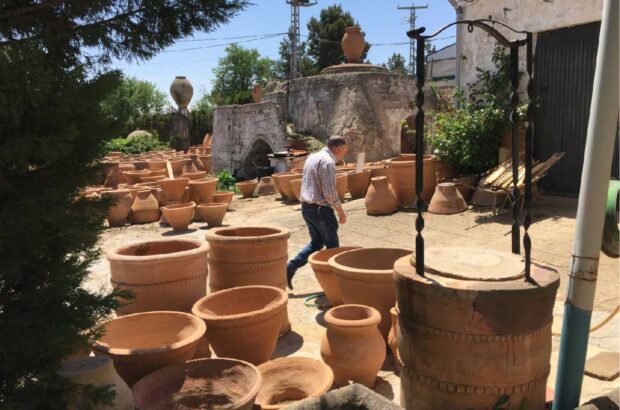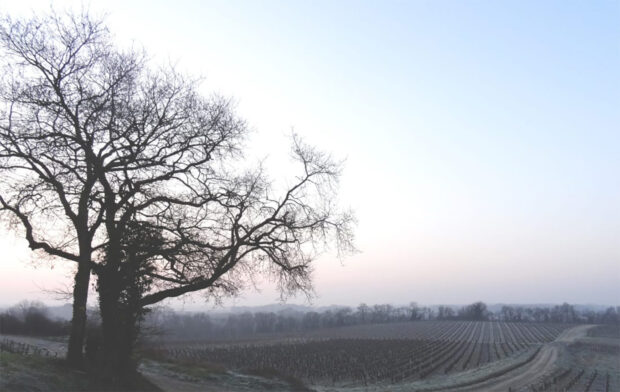I’m standing at the top of Elms Vineyard in Bannockburn, looking along rows of vines that have been manicured to privet hedge neatness. It’s another of those clichéd big sky days and from where I’m standing I can see absolutely no reason for wanting to go back to the northern hemisphere. Bright sunlight, wild thyme in the air, a panoramic view of the Cromwell Basin and a perfect north-facing Pinot Noir wine vineyard in the most beautiful corner of New Zealand’s South Island – what more could an Englishman want?Judging by the look on Nigel Greening’s face, the answer to that question is ‘not much’. The new owner of Felton Road – he bought it last year for the reputed sum of NZ$8million (£2.5million) – is walking down the already famous Block 3 with an expression that is a combination of schoolboy excitement, fatherly pride and lottery winner disbelief. It is now more than five months since Greening got his cheque book out and changed his life for good, and I think part of him still can’t quite believe his dream has come true.
This is the story of Felton Road. It is the story of a man who created one of the world’s most exciting new vineyards and then sold up, just as it was taking off. It is the story of a man who loved the wine so much that he bought the company that made it. It is the story of a New Zealander’s vision, an Englishman’s dream and a wine that is already being hailed as a New World classic. It all began back in 1990 when Stuart Elms did what few fifty-somethings have the courage to do. He jumped out of his farming business – growing blackcurrants for Beechams drinks – and signed up as a mature student on the viticulture and wine science course at Lincoln University. He was the oldest student by about 20 years. His post-graduation goal was to make great Pinot Noir and, after extensive soil and climate research, he found a perfectly exposed slope just off the Felton Road in Bannockburn. Planting, which began in 1992 after Elms had persuaded the hay farmer to sell up, was meticulously planned. Not only did Elms divide the land into blocks with different clones matched to different soil types, he even built special culverts and channels to steer water and cold air through the vineyard without affecting the vines. By 1995 the first Felton Road grapes were ready to be picked and, by chance, the UK importer Christopher Fielden, visiting Elms at the suggestion of a friend in Auckland, was there just in time to taste the fruit. ‘It was about to be taken off to Gibbston Valley and straightaway I asked Stuart if he could get them to make a hogshead of wine for me,’ remembers Fielden.
In the end, two hogsheads of the 1995 vintage were made and if you look back through the records of the International Wine Challenge, you’ll find Felton Road (the wine was made by Grant Taylor at Gibbston) gets an honourable mention. Of the 300 bottles shipped to the UK, only a few remain and, given the rising fortunes of this Central Otago star, I’m guessing they are now being jealously guarded.
Parker plaudit
No wine was made in 1996 but in 1997 young winemaker Blair Walter, Stuart’s lab partner at Lincoln, made the first official Felton Road Pinot Noir. It won a Liquorland Top 10 trophy but, more importantly, a bottle of the Block 3 ended up in front of Robert Parker, who famously declared it good enough to be used as a ringer in a blind tasting against the very best burgundies. Presumably on hearing this news Stuart hastily cancelled his marketing plans and Blair sat with head in hands wondering how the hell he was going to live up to that reputation with his 1998. Felton Road was on the map. Meanwhile, just down the road, an English businessman started his own plans to find that elusive Pinot Noir Holy Grail. Having sold his London-based theme park design company, Nigel Greening had decided to go and live in New Zealand for a year.
Appliance of science
First he found the perfect house, near Lake Wanaka, and then he began the search for the right site for his Pinot Noir Laboratory. Teaming up with Gibbstons’s Alan Brady, he studied geological and meteorological maps, then drove out to check whether the land was available. In the end, Greening settled on an apricot orchard called Cornish Point. No sooner had he bought this land and ordered 4,000 perfectly good apricot trees to be ripped up than word reached him that Felton Road was up for sale. To say Greening liked Felton would be an understatement. As purchaser of over a third of the UK allocation of both the 1998 and 1999 vintages, he was without doubt its number one fan.
With Brady acting as intermediary, Greening put in an offer and within three days was the proud owner of his favourite wine. The price caused a great deal of curtain twitching locally and no one knew anything about this straggly haired Englishman. But while mutterings about the price might still linger, all fears about Felton Road’s new owner disappeared as soon as Greening’s passion and vision for Felton became obvious. One of the first things he did after buying the winery was to buy back as much of the 1998 vintage as he could find, in order to build up a library stock for the future. In a labour of love that most winery bosses would consider a mad waste of time, he personally visited just about every Thresher shop in southern England and managed to track down eight cases. At the moment Felton Road produces just 2,000 cases of Pinot Noir, but this will increase as two new, leased vineyards start producing in 2002; and then there is Greening’s Laboratory, which is set to be one of the most extraordinary Pinot Noir projects in New Zealand.
‘We wanted to see how many different games we could play,’ says Greening who has split the vineyard into 23 blocks, each sized to fit inside a three-tonne fermenter. As well as mapping the soil and choosing three different rootstocks for the soil profile, he has picked specific clones to match the heat patterns. Some of the fruit – production starts in 2003 – will go into Felton Road, but most will become small-batch releases of monoclones, single blocks and other Pinotphile experiments. Total Pinot Noir production will never exceed 10,000 cases (with about 4,000 cases of whites), but Greening is clearly keen to ease the pressure on supply. The current UK allocation for Block 3 is just 15 cases, though stocks are being kept at London City Bond, so you can get a cellar door wine from the other side of the world delivered in 48 hours. And if this has already disappeared, take comfort in the fact that even famous Felton fans don’t get special treatment. Bill Gates recently tried to buy a case and was politely told he could only have three bottles.












